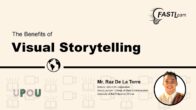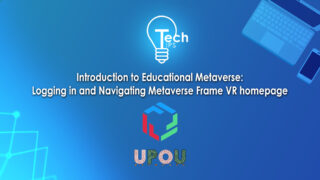What are the benefits of visual storytelling?
When you think about the visual medium, you have to remember that what you’re really doing in essence is just everything that you do say in real life. For example, when you talk to someone, you’re basically engaging with that person.
When you are an educator and you’re talking in front of a class full of students, you’re basically trying to teach them something. When you’re a mentor talking to your subordinates and you’re trying to lead them, it’s basically a type of engagement as well. So even if I’m an educator, I’m not necessarily a director, but if I know that teaching my lessons through the visual medium is a tool that I can be more effective, then it’s an added arsenal on your part. So looking for opportunities, I believe, is one of the best ways to realize that we are all visual storytellers and we could all be potential visual storytellers, maybe even effective ones.
And it’s just really knowing what I can do in say maybe two hours of talking to my subordinates to teach them about leadership. What if I show them a short film that runs in 20 minutes, but instead of being there in a seminar room, they’re watching something on screen that allows us to go outside of the seminar room and see the world that they’re watching in that 20-minute short film that allows me to communicate the values that I’m trying to instill in my subordinates.
That’s me as a leader and it can be in any kind of field using the medium. So looking for those opportunities and remembering that visual storytelling, when effective, can really do away with many of the things that probably shackles us from being more productive. So rather than moving on to talk about individual problems, say for example, in a leadership subordinate setup.
I can instead be using my visual storytelling to shorten the time and then focus on other things. It’s the same thing for education. If I instead find a way to teach something in a very effective way, in a visual medium, then that allows me more to focus on maybe going into each individual person and talking to them about how can they improve specific skills or maybe even move forward to more advanced lessons that I probably won’t be able to cover in a limited period of time. So remembering that this is something that is accessible to all of us and it’s something that is innate in humanity. Just us going back home and talking to our parents, to our girlfriend or boyfriend, telling them about our day. Just trying to let out that, okay, I had a bad day, this is what happened. That’s storytelling. When we meet someone, oh, I’m from this place, and oh, okay, do you know this, or do you know this person, or have you ever been to this place? You’re actually just exchanging stories and making connections. It’s something innate in all of us.
So that’s something that, you know, if you keep it in mind and you know that it’s something that can just be activated in all of us, then we all have the capacities to be telling stories. And doing it visually is just another step that we are all starting to be really familiar with in the first place kasi right now, at the moment, we are all media consumers and everyone has a smartphone.
Kapag may birthday celebration, take a picture. May surprise na nangyayari? There’s an accident that happened on the street? Switch to video mode. Record! Upload it on Facebook, suddenly you’re hitting a lot of views, you’re suddenly a storyteller. I was the one who told the story of this accident that they’re talking about in the news, and they’re using your footage. You’re a visual storyteller. So that is the power of storytelling, and that’s the even bigger power of storytelling when done visually.







































